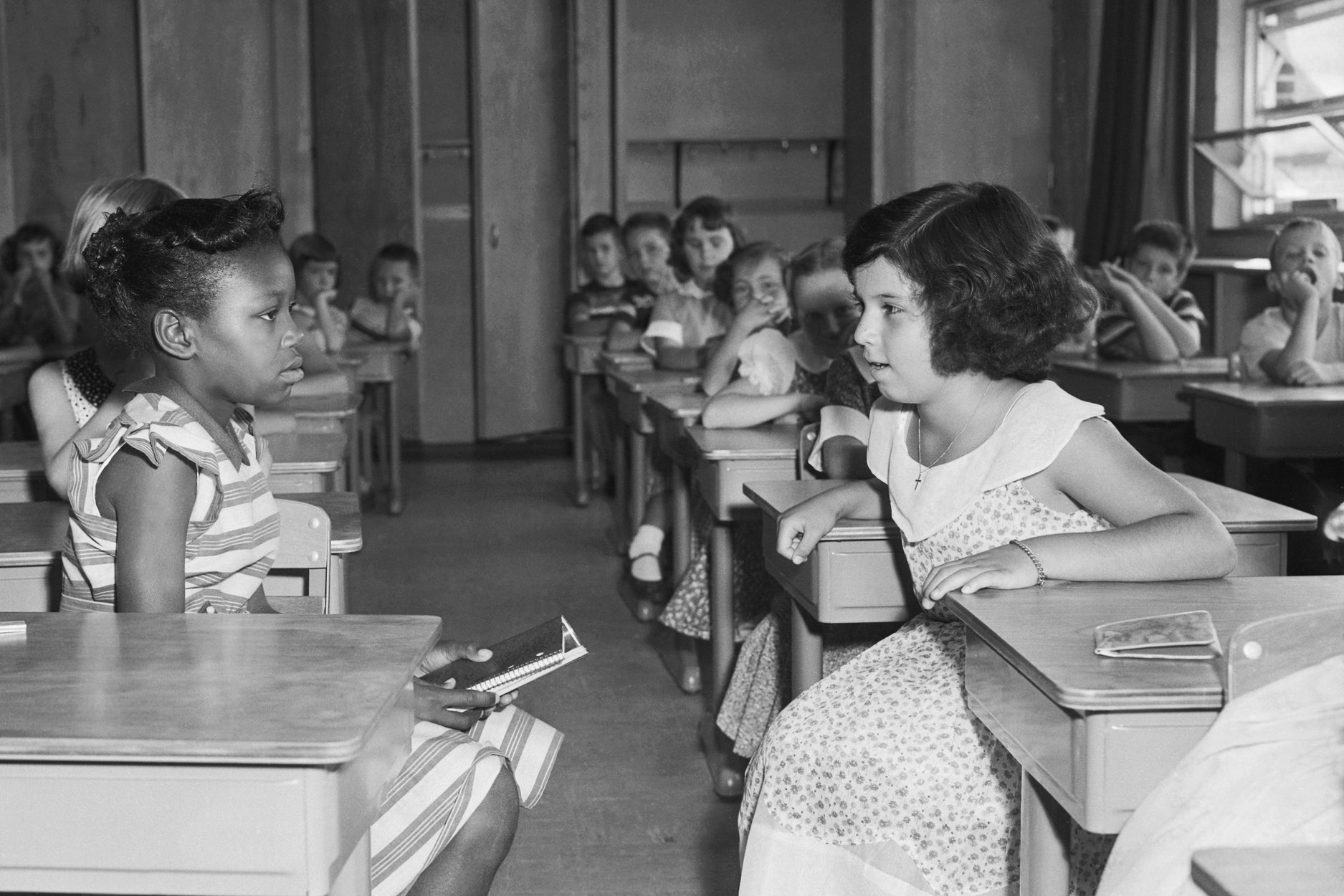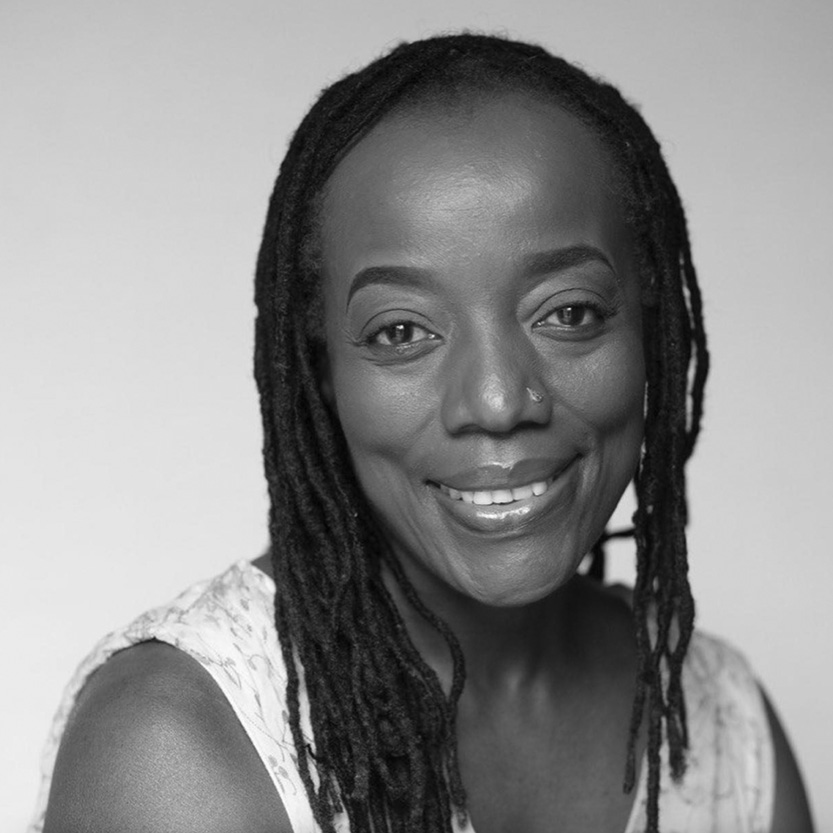
Tsitsi
Dangarembga
Decolonizing the
Screen: An
Intersectional
Approach
Issue #02 — Transforming Environments
In the contemporary globalized, digital era, moving images circulate increasingly freely to express ideas and opinions and convey information. Theoretical discussions of the power that moving images exert in society suggest that this power is derived from the ability of such images to engage a single individual deeply and to engage large numbers of individuals across big populations deeply.[1] As early as 1988, inquiry into moving images discourse suggested that the dominant tradition of the practice, typified by Hollywood, contributed to underpinning social inequality in two demographic categories, namely class and gender.[2]
More recent investigation has inquired into the functioning of other social demographics in film narrative. Prominent amongst these other demographics is the category of race, referred to here as «melanation». «Melanation» here refers to the amount of melanin pigmentation present in a person’s skin. This term is used because it is a physiological description, unburdened by the socio-psychological meanings of the word «race», or the colour adjectives commonly used to describe the various members of the category. Findings support the notion that contemporary moving images narrative discriminates systematically against individuals on the basis of the melanin content in their skin, with discrimination taking place at the level of narrative content, access to means, and the functioning of technology, whose interaction causes cause different marginalizations of different demographic populations.
Time online of July 24 2020 observes that, «Technologies, such as photographic film, sometimes capture the issues and beliefs and values of the times.»[3] The article goes on to discuss an inbuilt anti-melanin bias in much contemporary image capturing technology, whose result is that highly melanated people are often distorted and rendered unrecognizable or all but invisible. A well known example of this bias is this February 13, 2022 tweet posted by Prince Akamura,[4] an American American football player who is a United States citizen of Nigerian heritage. The technology used to take the photograph erased Prince Akamura as a subject, leaving only the two lesser melanated men he is with as prominent, visible subjects of this visual narrative. While the subject of the Akamura tweet is a still photograph, the Times article also refers to digital technology’s inability to follow a melanated form.

The first technique of capturing moving images was demonstrated in France in 1895, a decade after the Berlin Conference ended. The Berlin Conference cemented colonization as a politico-economic system of global northern expansion predicated on extractive suppression of melanated people. A key symbolic tactic of this process was negation of melanated people’s humanity. The chemical procedures developed to fix visual images on celluloid in the era of colonization resulted in film stock whose dynamic range favored light tones, which rendered dark tones indistinct. Often all features of highly melanated subjects were lost, apart from the whites of the eyes and the teeth. This constituted technological erasure of the melanated human subject at the very onset of moving image capture. This deficit persisted in both still and moving image capture technology following the development of color stock. This erasure persists until today as the newest technologies with increased dynamic range are costly and therefore inaccessible to many, including those who have traditionally been prejudiced by erasing distortion of their physical likeness in photography. In this way photography reflected and supported the operation of the colonial system.
The chemical procedures developed to fix visual images on celluloid in the era of colonization resulted in film stock whose dynamic range favored light tones, which rendered dark tones indistinct.
Although colonial France and England, the biggest colonizers of highly melanated people, administered the practice of moving images narrative differently in their African colonies, there were similarities. In the French colonies, Africans were explicitly forbidden by the Laval Decree of 1934 from making films in Africa (Cassis 2010[5], Ugor 2007[6]). In British colonies, a system of censorship stifled attempts by Africans to engage in film practice (Ugor ibid). Attainment of independence in the 1950s and 1960s by the majority of African countries liberated melanated people on the African continent legally to represent themselves in moving images and to engage, as melanated people in the Americas also engaged, with the inadequacy of the technology for their representation.
The 1960s were a critical period in the African-American civil rights struggle.
Desegregation policies, including bussing of melanated children to school in neighborhoods inhabited by lesser-melanated people, that had been initiated in the previous decade were consolidated. African-American mothers in recently integrated schools began to complain about the way their children appeared in school photographs, especially in juxtaposition to lesser-melanated schoolmates. Kodak, the market leader in still and moving images photographic stock at the time, did not pay attention to such complaints until manufacturers of dark-hued commodities such as chocolate and wooden furniture also complained of the narrow dynamic range available. It was only then, in response to the need to photograph commodities rather than human beings more reliably that film stock capable of obtaining definition of darker content was developed.

An anti-melanin bias of moving images narrative is also evident within gender categories.
An anti-melanin bias of moving images narrative is also evident within gender categories. Herbert (2018), observes how «the story of Black women in British mainstream cinema is certainly one of invisibility and misrepresentations»[7]. The same article notes that social institutions are not interested in the work of Black British women filmmakers , so that this group of filmmakers is rendered invisible, where what is invisible is unimportant, not to be spoken of. Herbert states that as of 2018 only four black British women filmmakers had had a cinematic release. She updates this figure to six in a 2020 article [8]. This state of affairs suggests the moving images industry places no value on the lived experiences and struggles of this demographic of human beings, at least not as narrated from their own perspectives.
Zimbabwean NGO, the Institute of Creative Arts for Progress in Africa (ICAPA) Trust hosts the International Images Film Festival for Women (IIFF), an annual festival that foregrounds films with a strong female lead, with the objective of narrating female agency to audiences in Zimbabwe and elsewhere on the continent. Research carried out by ICAPA Trust found that between 2013 and 2017, only 17% of IIFF documentaries, and only 14% of fiction films with a running time of 45 minutes or longer were made by African women.[9] The 45 minute running time criterion was chosen because a cut-off of 90 minutes, the approximate running time of a feature length film, the number in the fiction category would have been zero.
ICAPA Trust’s decolonial, gendered intellectual inquiry and practice in moving images continue with the support of Gabriele Sindler of dfk films. Further research is needed into the presence and absence of melanated women in front of and behind the camera, into the reasons or the absences, and into the nature of their presence across categories such as age, class and nationality. Effects of current diversity, inclusion and equality programs on different melanated women’s participation in the socially influential sector of moving images narrative requires further evaluation.
Tsitsi Dangarembga
The author, director and cultural activist Tsitsi Dangarembga lives and works in Zimbabwe, USA and Germany. She attended Cambridge University and Sidney Sussex College before studying psychology at the University of Zimbabwe and screenwriting and directing at the German Television Academy Berlin. Tsitsi Dangarembga co-founded the Institute of Creative Arts for Progress in Africa (ICAPA) Trust in 2009. ICAPA Trust facilitates, produces and trains in the production of innovative products across a spectrum of narrative genres. In 2003, she founded the International Film Festival for Women in Harare, Zimbabwe, a festival that screens films featuring female protagonists and offers training programs.

[1]
Carroll, N. The Power of Movies, in Carroll, N. Theorizing the Moving Image. Cambridge University Press, Cambridge, 1996. Herman, E S and R W McChesney. The Global Media: Th New Missionaries of Capitalism. Cassel, London, 1997
[2]
Lapsley, R. and Westlake, M. Film Theory: An Introduction. Manchester University Press, Manchester, 1996, pvii.
[3]
Time.com/5871592/film-race-history/
[4]
https://twitter.com/PrinceAmukamara/status/1492970247657197568ref_src=twsrc%5Etfw%7Ctwcamp%5Etweetembed%7Ctwterm%5E1492970247657197568%7Ctwgr%5E5468e7b5dae8d5cb65167af509ec2278cb6ac71f%7Ctwcon%5Es1_&ref_url=https%3A%2F%2Fwww.fastcompany.com%2F90906918%2Fphotography-is-inherently-racist-can-new-technology-change-that
[5]
Cassis, Kilian (2010) «Glimmering Utopias: 50 Years of African Film» in: Africa Spectrum, 45, 3, 147-159. Available at www.africa-spectrum.org
[6]
Ugor, Paul, (2007) «Censorship and the Content of Nigerian Home Video Films» in Postcolonial Text, Vol 3, No 1, University of Alberta Available at http://postcolonial.org/index.php/pct/article/view/518/403
[7]
Herbert, Emilie. »Black British Women Filmmakers in the Digital Era: New Production Strategies and Re-Presentations of Black Womanhood« Open Cultural Studies, vol. 2, no. 1, 2018, pp. 191-202. https://doi.org/10.1515/culture-2018-0018
[8]
Herbert-Pontonnier, Emilie. 2020. Black British Women Directors : a Story of Marginalisation and Resistance https://medium.com/@emilieherbertpontonnier/black-british-women-directors-a-story-of-marginalisation-and-resistance-44c574b11d00
[9]
Dangarembga, T. Double bind: Women film makers in Africa are edited too soon 2019. https://www.dailymaverick.co.za/opinionista/2019-04-29-double-bind-women-film-makers-in-africa-are-edited-too-soon/
Image Information
„Two students in Fort Myer Elementary School face each other on the first day of desegregation in 1954.“ © Bettmann Archive
Photo © @PrinceAmukamara (Twitter/X)